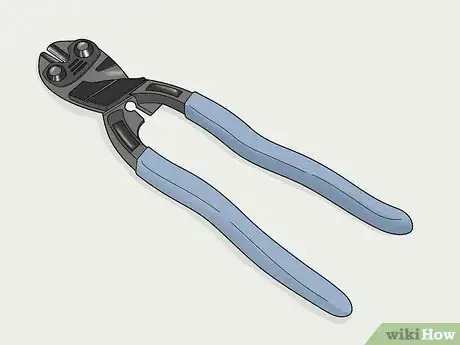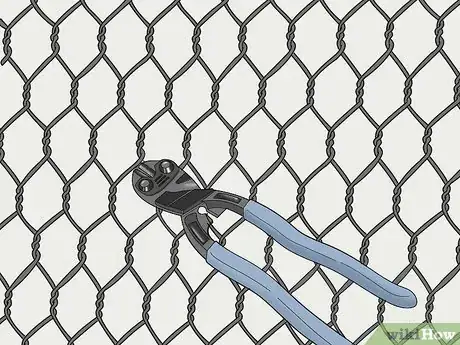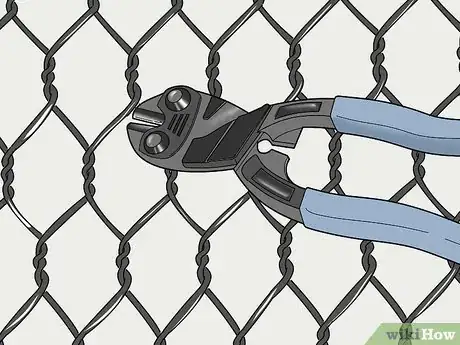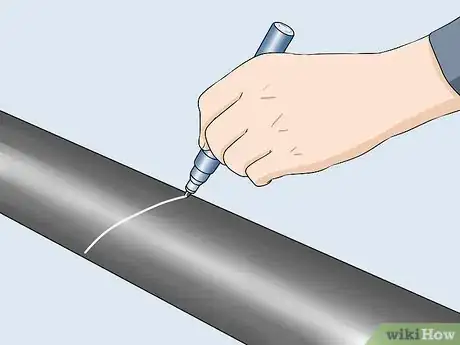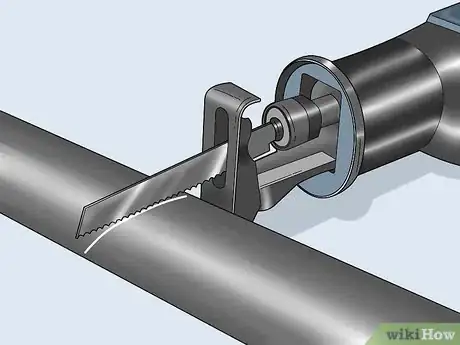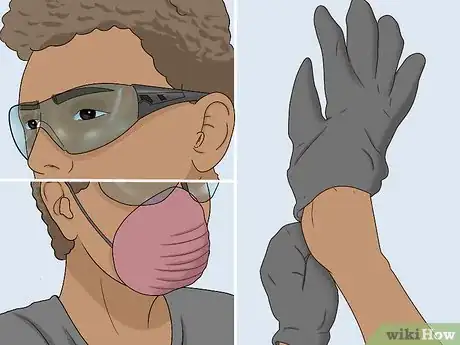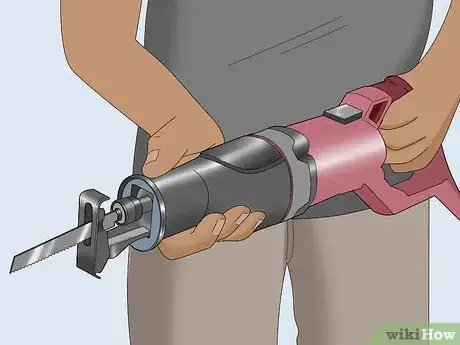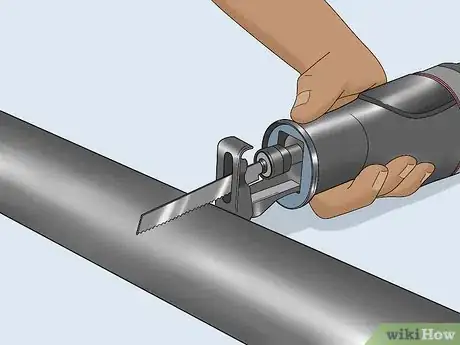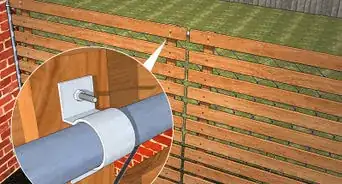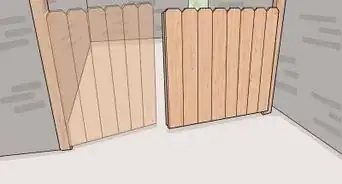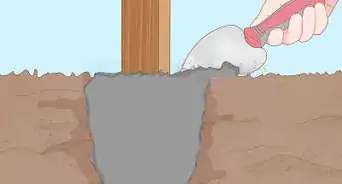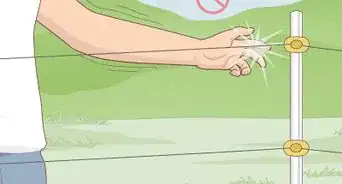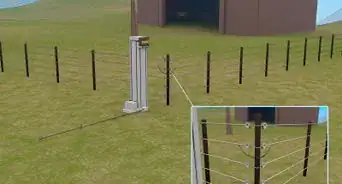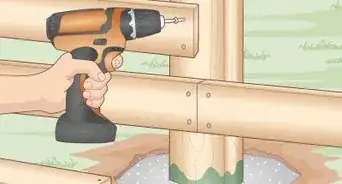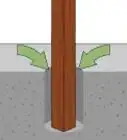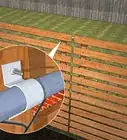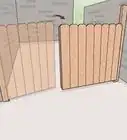This article was co-authored by Ryaan Tuttle. Ryaan Tuttle is a Home Improvement Specialist and the CEO of Best Handyman, Inc. in Boston, Massachusetts. With over 17 years of experience, he specializes in building home service businesses, focusing on creating scalable and efficient brands. With the help of his global team, the companies have achieved over 10+ million in sales and received recognition through magazine features, and enjoy partnerships with wikiHow and Jobber field service software. Boston Magazine and LocalBest.com have named Best Handyman Boston the Best Handyman in Boston. Ryaan holds Construction Supervisor and Home Improvement Contractor Licenses.
This article has been viewed 47,681 times.
Whether you’re repairing a chain link fence or removing one, you may need to cut part of it to get the job done. Though it might look like a complicated job, it’s actually not that difficult with the right tools. Use bolt cutters to snip through the links if you want to remove, replace, or shorten a section of the chain link. Use a reciprocating saw to cut the posts or rails if you want to shorten, remove, or replace them.
Steps
Snipping the Links with Bolt Cutters
-
1Get a pair of 8–10 in (20–25 cm) bolt cutters. Purchase the cutters at a home improvement center or borrow a pair from someone if you don’t have some already. Bolt cutters that are 8–10 in (20–25 cm) are ideal because they are big enough to easily snip through the links, without being too big to maneuver and handle.[1]
- You can get a pair of bolt cutters for under $50 USD.
Tip: Other types of cutters that work for cutting chain link fencing are called cutting pliers, metal cutters, or side cutters.
-
2Cut the chain link where you want to separate it from the rest of the fence. Determine which section of chain link mesh you want to cut out to remove or replace. Cut the links where they attach to the posts if you want to remove a whole section of the chain link fence.[2]
- Chain link fences are attached to the posts with tension bars. This is basically a strip of metal that runs up through the links and is held to the post with a tension band that wraps around the post. If you need to, you can also cut through the tension bars using your bolt cutters, though in most cases it’s easier and makes more sense to cut through the links of the fence.
- You can also use this method to cut off excess chain link after installing a new fence. For instance, to shorten the height of the chain link so that it matches the top rail instead of extending above it.
Advertisement -
3Cut through the links one at a time with the bolt cutters. Open up the bolt cutters and put the jaws around a link that you want to cut. Squeeze the handles of the bolt cutters together until they cut through the link. Repeat this for each link of the fence that you want to cut.[3]
- The bolt cutters will make quick work of cutting through the links. After you have cut through them all, you can easily separate the chain links from the rest of the fence to remove or replace the section.
-
4Snip the links close to where they intertwine. Cut each strand close to where it weaves through the next link. This will make it easier to unweave the section of chain link from the rest of the fence.[4]
- If you cut each link in the middle, on the straight part, it will be more difficult to separate the pieces of fencing.
Cutting Posts or Rails with a Reciprocating Saw
-
1Mark where you want to cut the post or rail with a permanent marker. Measure the post or rail if you need to cut a certain length off. Use a permanent marker to draw a cut line on the post or rail where you want to chop it.[5]
- If you are replacing a damaged section of rail, then get a replacement rail first and measure it to know exactly how long a section you need to cut out from the damaged rail.
- You can also use this method to shorten fence posts that aren’t installed yet. In this case, measure each post you want to cut carefully so you can cut them all to the same length.
-
2Equip a reciprocating saw with a blade for cutting metal. Buy a reciprocating saw blade for cutting metal if you don’t already have one. Many reciprocating saw blades are designed to cut through all types of material, but double-check that the blade you have or purchase is OK for cutting metal.[6]
- It’s a good idea to have an extra blade handy, in case the one you use becomes dull and difficult to cut with.
Tip: You can use a metal cutting hacksaw as an alternative to a reciprocating saw, but it will be much slower and more difficult to cut the rail or post by hand.
-
3Put on protective eyewear, gloves, and ear plugs. Wear safety glasses to protect your eyes from metal chips and sparks. Wear gloves to keep your hands safe and ear plugs to protect your ears from noise damage.
- Always wear this type of protective gear when operating any power tool.
-
4Plug in and turn on the reciprocating saw. Plug the saw into an outlet or extension cord if necessary. Hold it with both hands, with one at the back and one at the front of the saw, and press the power trigger down so the blade starts moving back and forth.[7]
- Most reciprocating saws have a handle at the back with the power trigger and another grip at the front near the blade that allows you to guide and control the saw while cutting.
- It’s a good idea to wear work gloves when using bolt cutters to protect your hands in case of any accidental slips. Wear safety glasses for eye protection as well in case any tiny pieces of metal fly into the air.
-
5Cut carefully through the post or rail with the saw. Place the reciprocating saw blade against the cut line and begin to push it into the metal. Keep applying pressure and pushing it further into the metal until you have cut all the way through.[8]
- Reciprocating saws are very heavy-duty and will do most of the work for you, as long as you have a sharp blade.
Warnings
- Wear work gloves and safety glasses for hand and eye protection when using bolt cutters or any other hand tool.⧼thumbs_response⧽
- Put on protective eyewear, gloves, and ear plugs when operating a reciprocating saw or any other power tool.⧼thumbs_response⧽
Things You’ll Need
Snipping the Links with Bolt Cutters
- 8–10 in (20–25 cm) bolt cutters
- Work gloves and safety glasses
Cutting the Posts with a Reciprocating Saw
- Reciprocating saw
- Permanent marker
- Protective eyewear
- Gloves
- Ear plugs
References
- ↑ https://www.thesawguy.com/how-to-cut-chain-link-fence/
- ↑ https://www.familyhandyman.com/garden-structures/fences/how-to-repair-a-chain-link-fence/
- ↑ https://www.youtube.com/watch?v=P8wZ5rMmYV0&feature=youtu.be&t=306
- ↑ https://www.youtube.com/watch?v=P8wZ5rMmYV0&feature=youtu.be&t=313
- ↑ https://www.familyhandyman.com/garden-structures/fences/how-to-repair-a-chain-link-fence/
- ↑ https://www.thesawguy.com/how-to-cut-chain-link-fence/
- ↑ https://www.thesawguy.com/how-to-cut-chain-link-fence/
- ↑ https://www.familyhandyman.com/garden-structures/fences/how-to-repair-a-chain-link-fence/
